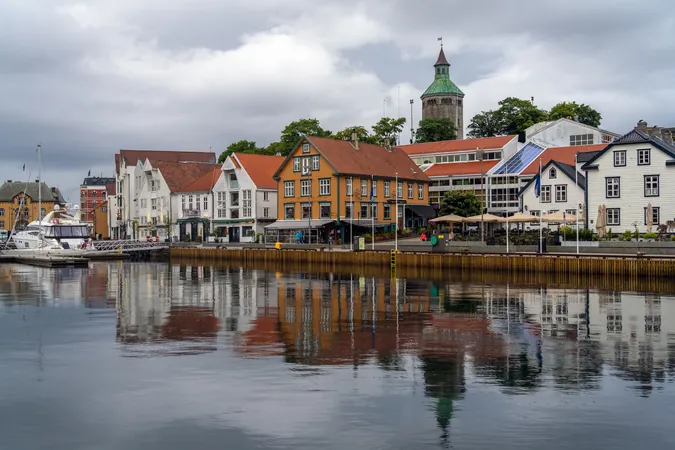
Revolutionary Study Unveils Breast Texture Patterns Linked to Cancer Risk
2025-05-13
Author: Mei
Groundbreaking Findings in Breast Cancer Research
In a pioneering study that combines cutting-edge technology and medical insights, researchers have identified six distinct breast texture patterns potentially linked to an elevated risk of breast cancer. Published in the journal Radiology, this extensive research sheds new light on how breast density can complicate cancer detection.
The Challenge of Dense Breasts
Women classified with dense breasts—those that contain a higher amount of glandular tissue relative to fatty tissue—constitute a significant portion of women eligible for breast cancer screenings. The nature of dense breast tissue can obscure mammogram results, making it difficult to differentiate between normal tissue and cancer growth, both of which appear similarly on imaging.
A Closer Look at Tissue Patterns
Adding further complexity, two women with comparable breast density can showcase markedly different tissue patterns. By enhancing our understanding of these unique patterns, researchers hope to improve breast cancer risk assessment significantly.
Celine M. Vachon, PhD, a leading epidemiologist at the Mayo Clinic, noted, "We believed that certain patterns could indicate a higher risk for future breast cancer, guiding targeted screening and prevention strategies. Conversely, other patterns might suggest a lower risk, allowing for less frequent monitoring."
Leveraging Radiomics for Insight
Utilizing a technique known as radiomics, the research analyzed mammograms from over 30,000 women with no prior breast cancer history across three screening groups. This approach extracts substantial data from medical images, revealing hidden patterns that human eyes might overlook.
With this approach, researchers identified 390 radiomic features, which were refined into six phenotypes and tested against mammograms from more than 3,500 women, including those who developed breast cancer and those who did not.
Key Discoveries for Clinical Practice
The findings revealed that these radiomic phenotypes correlate with a heightened risk of invasive breast cancer among both Black and white women. Notably, co-senior author Despina Kontos, PhD, observed that the risk appeared more pronounced among Black women, a demographic that often faces more aggressive breast cancer forms. "This highlights the urgent need for identifying new risk factors tailored to this population," she said.
Additionally, these phenotypes can indicate a woman's likelihood of receiving a false-negative mammogram or being diagnosed with interval cancer—imperative for timely intervention.
Looking Toward the Future of Breast Cancer Risk Assessment
Understanding which individuals are at the highest risk for aggressive breast cancers is crucial for effective prevention and early diagnosis, as emphasized by co-senior author Karla Kerlikowske, MD.
The research team plans to expand their study to larger groups within the U.S., investigating the role of 3D mammograms and integrating radiomic data with genetic and lifestyle factors to refine risk assessment protocols.
In summary, this study marks a significant step forward, promising to enhance breast cancer screening and potentially save lives.


 Brasil (PT)
Brasil (PT)
 Canada (EN)
Canada (EN)
 Chile (ES)
Chile (ES)
 Česko (CS)
Česko (CS)
 대한민국 (KO)
대한민국 (KO)
 España (ES)
España (ES)
 France (FR)
France (FR)
 Hong Kong (EN)
Hong Kong (EN)
 Italia (IT)
Italia (IT)
 日本 (JA)
日本 (JA)
 Magyarország (HU)
Magyarország (HU)
 Norge (NO)
Norge (NO)
 Polska (PL)
Polska (PL)
 Schweiz (DE)
Schweiz (DE)
 Singapore (EN)
Singapore (EN)
 Sverige (SV)
Sverige (SV)
 Suomi (FI)
Suomi (FI)
 Türkiye (TR)
Türkiye (TR)
 الإمارات العربية المتحدة (AR)
الإمارات العربية المتحدة (AR)